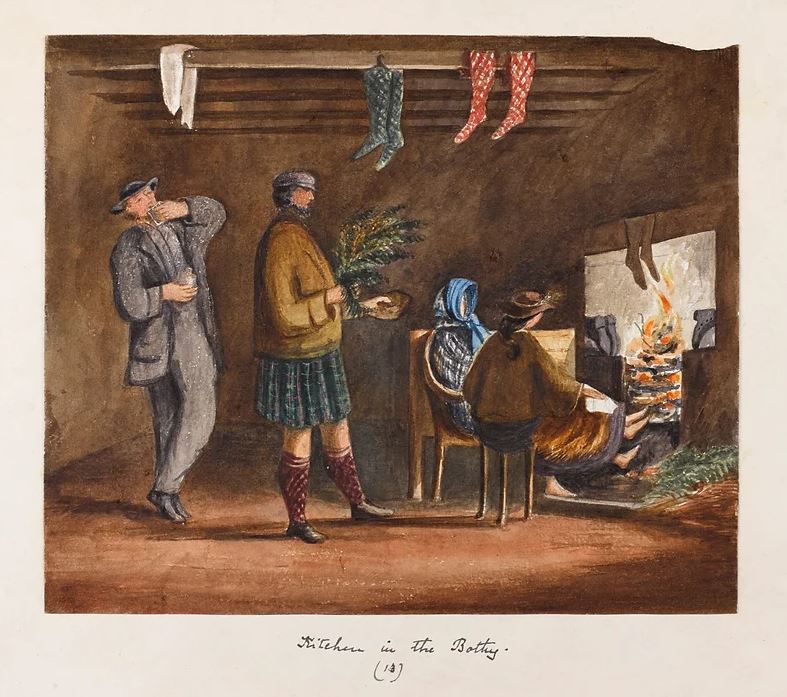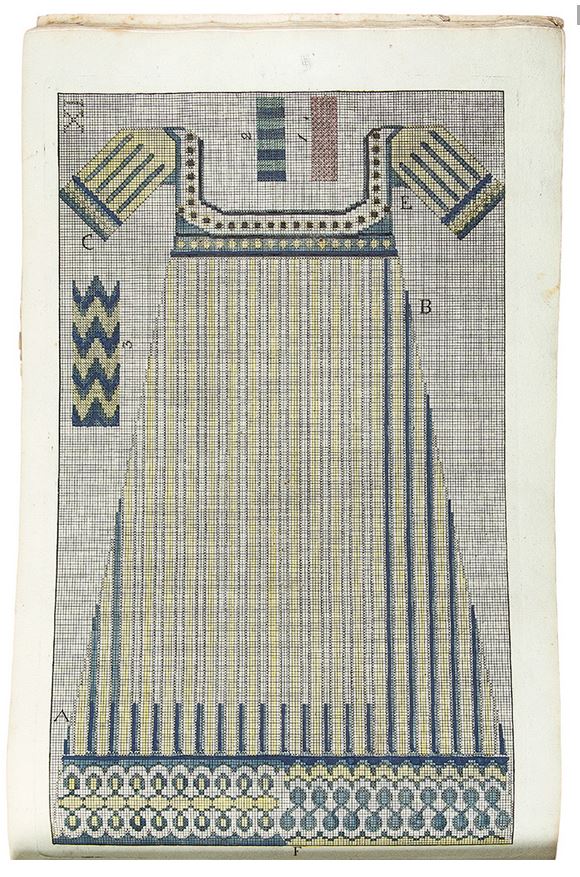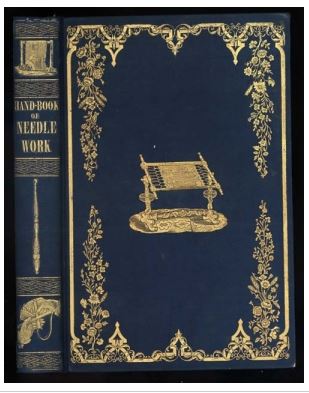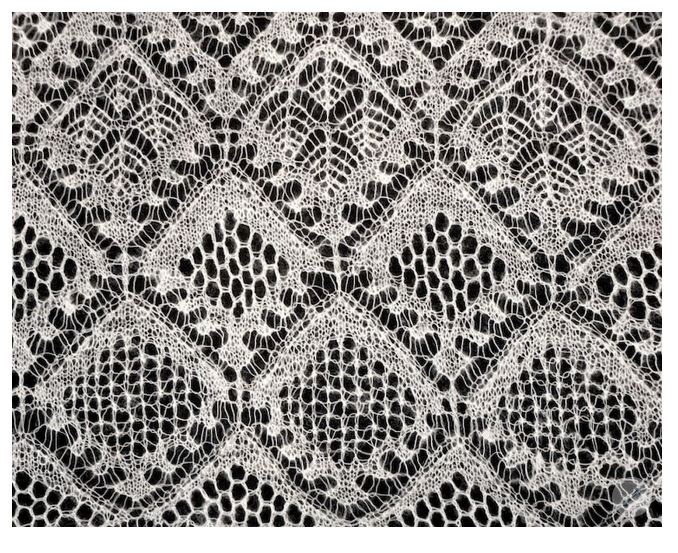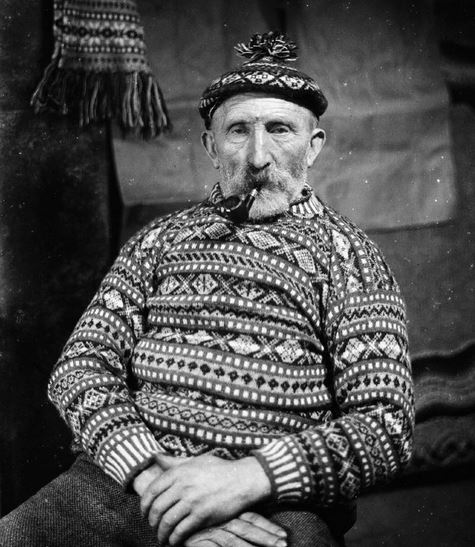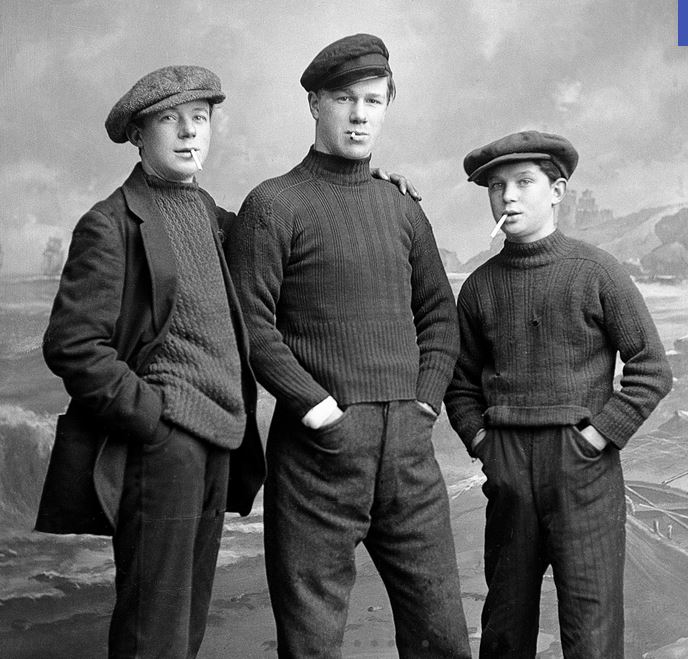This is the fourth in a series of posts on the origins of and developments in hand knitting. Note that this was originally intended to be a series of four posts but will be five – with the 19th and 20th centuries treated separately.
19th century
Scottish knitters were making kilt hose by the early 19th century, which featured knit purl patterns later seen in Aran knitting. By mid-century women in Gairloch, on the west coast of Scotland, were knitting fancy stockings for men, some of which incorporated the first argyle patterning,
Early in the century knitting books appeared on the scene in Germany and France, marking the increased popularity of drawing room knitting. Die Kunst zu Stricken (The Art of Knitting), is an example.
In Scotland, Jane Gaugain published 3 of her patterns in a private printing for friends in 1836. Frances Lambert’s first publication, The Handbook of Needlework, followed in 1842, in which 54 of the 360 pages were devoted to knitting. Soon, small books of knitting patterns were seen all over England,
Shetland became prominent on the knitting map in the 19th century, with its Unst lace and Fair Isle stranded colorwork knitting. The first documented lace from Shetland was a baby’s bonnet dated to 1832. The complex shaping and patterning indicate that lace knitting was not new to the area. Fair Isle knitting is documented as early the 1850s. The first Fair Isle garments were gloves, stockings, and caps.
Stranded color knitting was popular in the Baltic countries by 1830, and in Norway by around 1840. The photo below depicts a Fair Isle gansey (Shetland).
The gansey, or guernsey, the traditional hand-knitted pullover worn by the fishermen of the British Isles, evolved from an undergarment and its popularity became widespread in the 19th century. In Britain, the earliest printed reference to a fisherman’s jersey was found in a newspaper report in 1858.
England by this time was coming to the end of the Victorian era, and it was documented that Queen Victoria knitted scarves at the end of the century, in the last years of her life.
Next up (final in series): Knitting in the 20th century
Sources
Buss, Katharina. Big Book of Knitting. New York: Sterling Publishing Co., Inc., 2001.
Coleman, Ava T. “How It All Began.” TKGA.com. Cast On August-October 2008: 12-13. 28 August 2016 https://tkga.site-ym.com/global_engine/download.asp?fileid=AC65D860-440E-4B58-B61D-5AA5D4FE9577&ext=pdf
Forte, Mary. “Fair Isle: A Quick History.” TKGA.com. Cast On February-April 2009: 10-11. 28 August 2016 https://tkga.site-ym.com/global_engine/download.asp?fileid=C803C6CC-8258-4801-AB91-8F38219A1AF7&ext=pdf
Gibson-Roberts, Priscilla A., and Deborah Robson. Knitting in the Old Way: Designs & Techniques from Ethnic Sweaters. Fort Collins, CO: Nomad, 2004.
Macdonald, Anne L. No Idle Hands: the Social History of American Knitting. New York: Ballantine, 1988.
Nargi, Lela. Knitting around the World: A Multistranded History of a Time-honored Tradition. Minneapolis: Voyageur, 2011.
Rutt, Richard. A History of Hand Knitting. London: B. T. Batsford Ltd, 1987.

